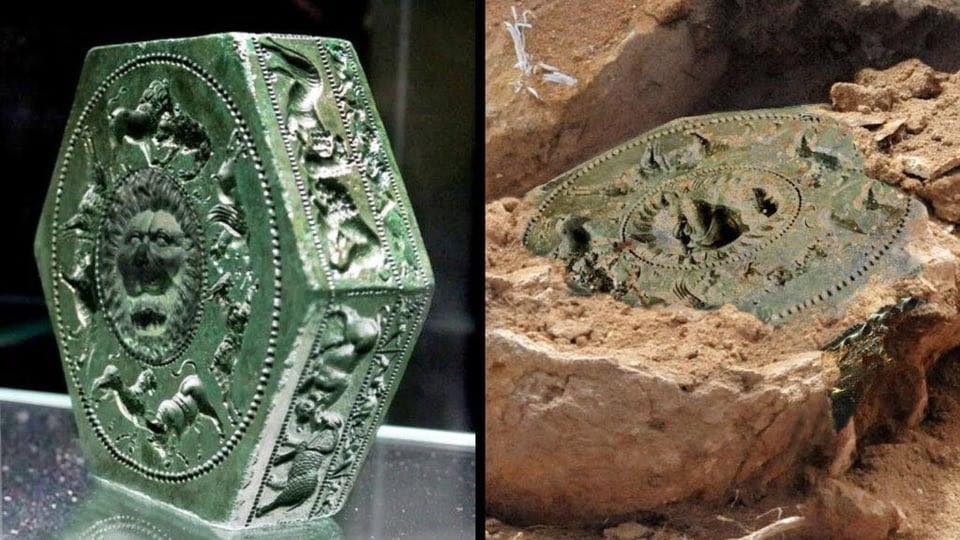Sarmizegetusa Regia – The Enigmatic Capital of the Dacians
Sarmizegetusa Regia, once the capital of the ancient Dacian Kingdom, is nestled deep in the Carpathian Mountains of Romania. This site served not only as a political and military hub but also as a center of cultural, religious, and artistic excellence. In 1999, it was recognized as a UNESCO World Heritage Site for its remarkable cultural and architectural significance.
The 2013 Storm – A Historical Coincidence
In 2013, a fierce storm swept through the region, uprooting an ancient tree at Sarmizegetusa Regia. Beneath its exposed roots, the site caretaker stumbled upon a rare artifact: an ancient bronze matrix, used by the Dacians to craft jewelry.
The Significance of a Fortuitous Discovery
This natural event inadvertently revealed a piece of history, allowing archaeologists to delve deeper into the craftsmanship of the Dacians. The bronze matrix demonstrates not only the artistry of this ancient civilization but also highlights the vital role of metallurgy in their economy and spiritual life.

The Bronze Matrix – A Tale of Art and Technique
The discovered bronze mold is a vivid testament to the ingenuity and creativity of Dacian metalworkers. It was used to create intricate jewelry from precious metals such as gold and silver.
The Role of Jewelry in Dacian Culture
For the Dacians, jewelry was not merely decorative but also symbolized power, social status, and spiritual beliefs. Many Dacian jewelry designs reflect natural motifs, animals, or religious symbols, underscoring their deep connection with nature and the divine.
Advanced Metallurgical Techniques
The Dacians’ metalworking skills were considered advanced for their time. The bronze matrix reveals that they employed sophisticated techniques such as casting, engraving, and precise hand-finishing, laying the groundwork for later innovations in the region.

Sarmizegetusa Regia – A Historical and Spiritual Treasure
Beyond its archaeological significance, Sarmizegetusa Regia is renowned for its unique architecture. Researchers have uncovered temples, observatories, and stone fortifications, showcasing the Dacians’ mastery of construction.
A Center for Religion and Astronomy
The Dacians were not only adept in military and artistic pursuits but also possessed deep knowledge of astronomy and spirituality. Certain structures at the site are believed to have been used for observing celestial movements, supporting their rituals and agricultural activities.
The Modern Relevance of the Discovery
The unearthing of the bronze matrix at Sarmizegetusa Regia in 2013 is more than a major archaeological event—it serves as a reminder of the importance of preserving cultural heritage. Every find at this site adds to the intricate historical narrative of the Dacians, a people who once defied the might of the Roman Empire.
Potential for Cultural Tourism Development
Discoveries like this elevate the significance of Sarmizegetusa Regia as a premier historical destination. By combining research and promotion, the site can become a global educational and tourist hub, attracting widespread interest.
Conclusion
The discovery of the bronze matrix at Sarmizegetusa Regia not only sheds light on the artistry and daily life of the Dacians but also underscores the importance of this site in the broader context of European history. What remains at Sarmizegetusa Regia serves as a message from the past, urging us to preserve and explore the vibrant legacy of this once-glorious civilization.
